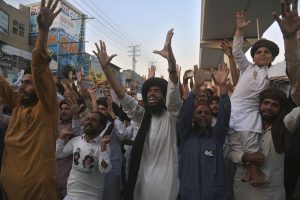Why do some governments crush tiny militant outfits while tolerating much more powerful armed groups? In a new book, Paul Staniland, an associate professor of political science at the University of Chicago, aims to explore the spectrum of relations between governments and armed actors, a range that runs from alliances to total war, cooperation to conflict, with much fluid grey space in between
“Ordering Violence: Explaining Armed Group-State Relations from Conflict to Cooperation” offers a series of cases studies drawn from South and Southeast Asia, which illustrate Staniland’s argument that ideology – or rather the perception by states of the ideological threats posed by armed groups – is a major driver of state responses and interactions between the two.
Across South and Southeast Asia, armed groups have long interacted with governments. What drives relations between states and armed groups in this region?
In my book “Ordering Violence,” I show that there is a huge spectrum of relations between non-state armed groups and governments, ranging from tight alliance to intense warfare to live-and-let-live deals in between. Rather than pitched fights to the death, there is a lot of gray space and variation.
I argue that one factor that helps to account for these differences are governments’ nationalist ideologies and the way these shape governments’ threat perceptions. Armed groups can be seen as deeply threatening, but also as friendly or tolerable even if unsavory, which shapes the level of coercion or cooperation that governments aim toward armed actors. This doesn’t mean that other factors – from external state backing to the strength of the armed group itself – are irrelevant, but we can learn a lot about these “armed politics” by exploring the historical sources of government threat perceptions.































